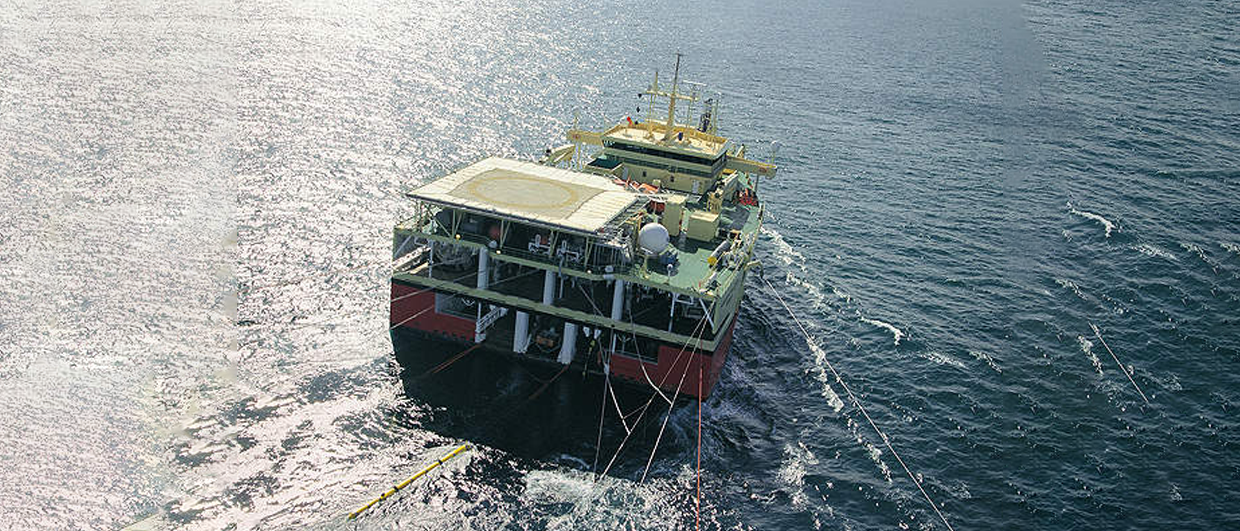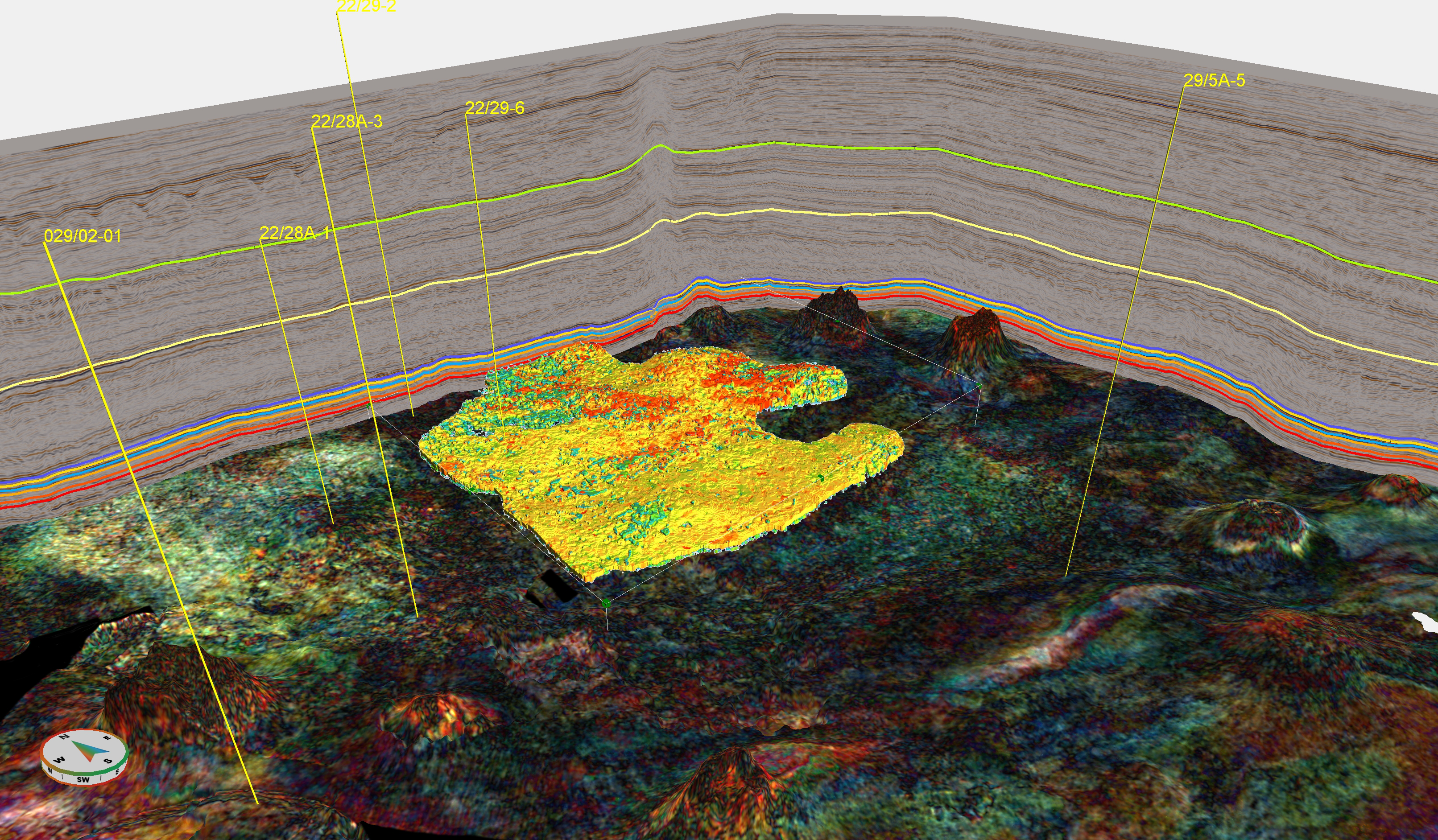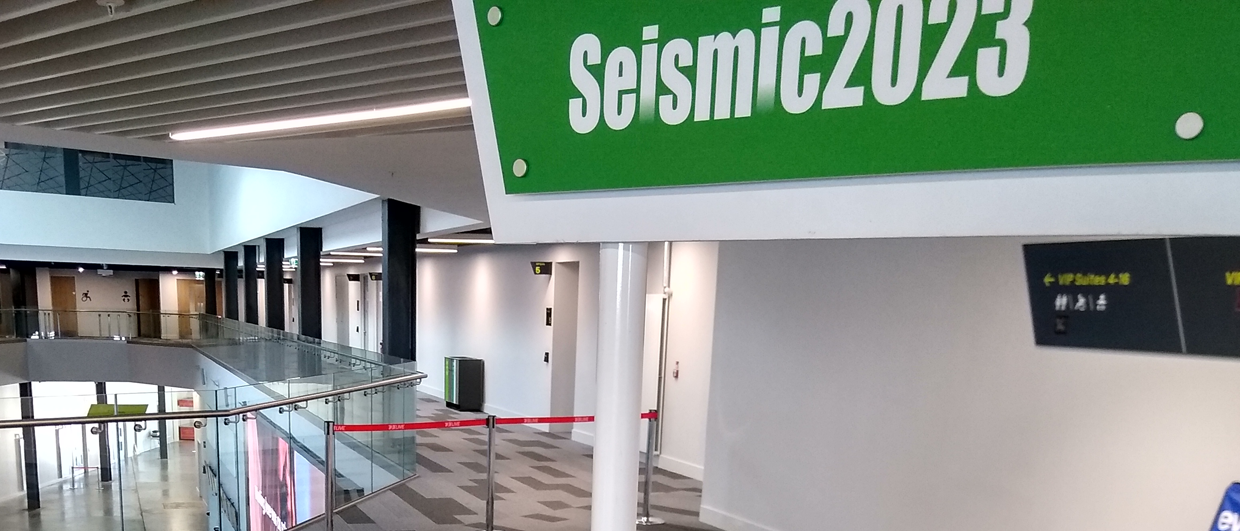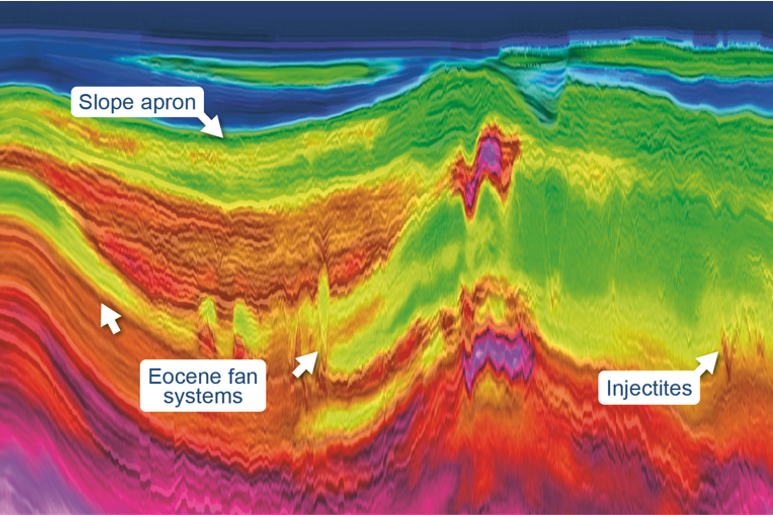Our goal with the reflection seismic technique is to obtain the most clearly defined, high-resolution image of the subsurface geology. This goal can be achieved by acquiring seismic surveys with dense and uniform sampling in both spatial domains.
This article includes a recent high-density 3D case study, acquired by PGS in the NW Palawan Basin, Offshore Philippines. Stringent resolution and steep dip imaging were survey objectives. Consequently, survey planning recommended a 12 streamer acquisition configuration at close separation, in dual-source shooting mode. This approach allowed the recording of steeply-dipping data free of aliasing in any direction, and enabled a high resolution processing approach to preserve a large frequency bandwidth throughout all stages of processing.
In fact, data quality and resolution is excellent, enabling the ability to confidently interpret a highly complex set of geological features.
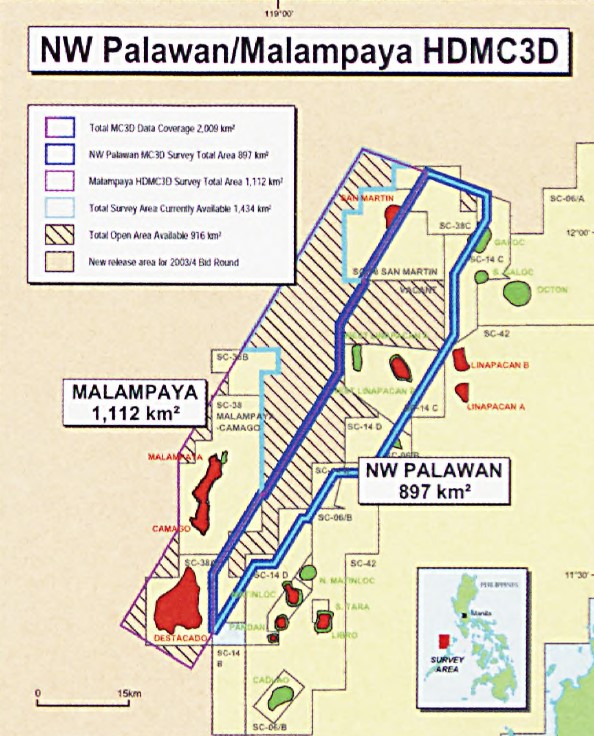
Improving bandwidth
Historically though, 3D marine streamer acquisition has been forced to compromise spatial sampling in the name of efficiency and cost. This compromise translates to noise and degraded resolution when pro cessing the data. A significant component of the seismic “noise” contaminating 3D images actually arises during processing, as an unfortunate and inescapable artifact from poor 3D spatial sampling. If the cross line acquisition dimension could be sampled at an equally small interval as the inli ne dimension, a much larger frequency bandwidth than typical of standard 3D marine streamer acquisition could be pre served throughout all stages of processing. The High-Density 3D (HD3D™) marine streamer acquisition method explicitly addresses the issu-? of tight 3D spatial sampling. HD3D acquisition offers a data pro duct that is properly sampled in both spatial directions, of high quality, and it is cost efficient.
Since 2001 the ability to routinely tow 12 to 16 streamers at very small separation (37.S to SO m) has delivered a great leap forward in the marine streamer acquisition scenarios previously considered impossible – all at a comparable cost. Single-source shooting delivers high fold, increased signal-to-noise (S/N) ratio data, and inline processing fidelity. Dual-source shooting when combined with high streamer count delivers the tight 3D cross-line spatial sampling required for high resolution imaging of steeply dipping events.
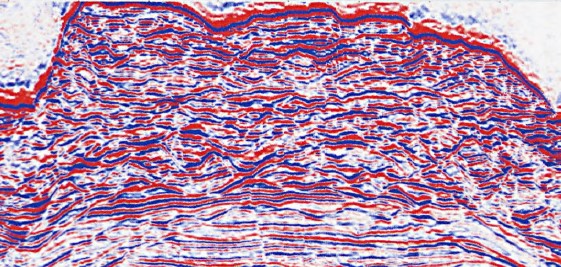
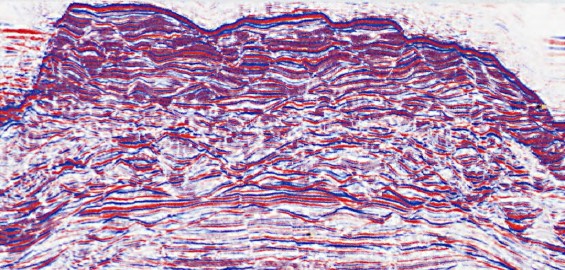
HD3D Fundamentals
Modern seismic vessels, such as the Ramform design, with their massive towing capacities, have changed the way in which modern seismic data are acqui red.
Dual-source shooting has historical dominated streamer acquisition, by com parison to single-source shooting, because the streamer separation with single-source shooting must be halved to preserve cross-line processing fidelity. In the days of limited streamer capacity, small streame spreads using small streamer separation were prohibitively expensive to deploy Since 2001, the ability to tow 12 to 16 ton streamers at 37.5 to 50.0 m separation with no loss of efficiency (i.e. no increase i downtime), has reduced costs so that sing le-source acquisition is cost effective. Suc surveys have benefits of increased fold improved 3D spatial resolution, and impro ved imaging quality.
Alternatively, certain survey location are more amenable to dual-source shoo ting in high-density (close streamer separation) 3D mode, where the gains in crosline spatial sampling are more important than offset due to fold compromise. Overall, dense streamer acquisition provides tight receiver sampling in all directions, and tight shot sampling in the shooting (inline) direction.
Furthermore, significant improvements are possible in many of the necessary steps in data processing such as velocity determination, multiple removal, noise attenuation and migration imaging solutions.
PGS acquired the 1100 km2 Offshore Philippines multi-client HD3D survey during 2002. A structurally complex carbonate reservoir occurs at about 3.2 s TWT, below a very rugose, deep, water bottom, and undercompacted, stratigraphically complex overburden. Previous 3D data failed to yield satisfactory images of the overburden, and many structural ambiguities at the deep reservoir level confronted the drilling and production development of reserves.
The R/V Ramform Challenger was used to tow 12 x 4050 m streamers at 50 m separation, shooting in dual-source mode at 18.75 m shot interval. In terms of trace densities, the new HD3D survey yielded 691,000 traces/ km2, in comparison to 95,000 traces/km2 corresponding to existing 3D data in the area.
Data comparison to existing 1991 and 1993 3D data indicated significant improvements in the structural imaging and resolution of the target events.
A powerful demonstration
We have seen that high-density 3D acquisition in dual-source shooting mode yields very tight 3D spatial sampling. The benefits for significantly increased data resolution (both temporal and spatial) are evident at all data depths and locations. Small-scale faults and stratigraphic trends become quite dramatically evident, even at very shallow depths, where efficient scale multi-streamer spreads might have historically been regarded with caution.
It is demonstrated that the ability to acquire and use a large frequency bandwidth from shallower events, free of aliasing, prevents processing noise from degrading deeper data quality and resolution. At depth, the only limiting factor upon frequency bandwidth is the natural non-elastic attenuation.
In conclusion, the significant increase in frequency bandwidth observed at all arrival times, and the associated improve

